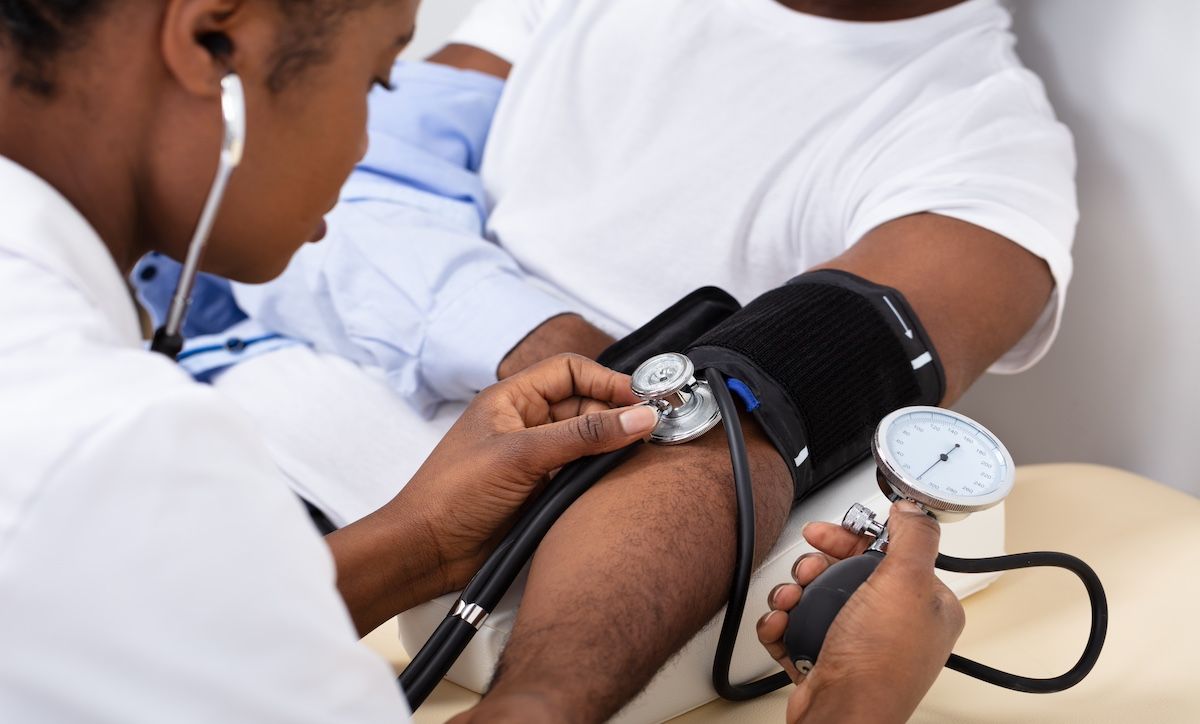News
Article
Intensive Blood Pressure Regimen Lowers CVD Risk for People With Diabetes
Author(s):
Key Takeaways
- Intensive SBP control to ≤120 mmHg reduced major cardiovascular events by 21% in type 2 diabetes patients compared to standard treatment.
- The BPROAD Study involved nearly 13,000 adults with type 2 diabetes and high SBP across 145 sites in China.
Reducing systolic blood pressure to less than 120 mmHg lowered the risk of major cardiovascular events for most people with type 2 diabetes in the Blood Pressure Control Target in Diabetes trial.
This article was first published by HCPLive® and has been lightly edited.
An intensive treatment regimen to reduce high systolic blood pressure (SBP) achieved a notable reduction in the risk of cardiovascular disease in adults with type 2 diabetes, according to new late-breaking science presented at the American Heart Association (AHA) Scientific Sessions 2024.1
The Blood Pressure Control Target in Diabetes (BPROAD) Study included nearly 13,000 adults with type 2 diabetes and high SBP in China. Researchers evaluated the effect of lowering SBP to ≤ 120 mmHg on the risk of major cardiovascular events, including non-fatal heart attacks, strokes, hospitalized heart failure, or death due to cardiovascular disease.
Nearly 3-quarters of adults with T2D experience high blood pressure. | Image credit: Andrey Popov – stock.adobe.com

“We found that for most people with type 2 diabetes, lowering systolic blood pressure to less than 120 mm Hg reduced the risk of major cardiovascular events,” said Guang Ning, MD, PhD, a professor at Ruijin Hospital at Shanghai Jiao Tong University School of Medicine, and lead investigator.2 “These findings provide strong support for a more intensive systolic blood pressure target in people with Type 2 diabetes for the prevention of major cardiovascular events.”
Nearly three-quarters of adults with type 2 diabetes experience high blood pressure, according to CDC data.3 Lifestyle modification and therapeutic intervention are recommended for people with consistently raised blood pressure levels, as lack of management can increase the risk of adverse cardiocascular outcomes.
BPROAD enrolled 12,821 adults at 145 study sites in 25 provinces or municipalities across mainland China; participants had type 2 diabetes, elevated SBP, and an increased risk of cardiovascular disease.1 The criteria for elevated SBP were ≥ 140 mmHg without hypertensive medication or ≥ 130 mmHg and receipt of ≥ 1 antihypertensive medication.
The study population had an average age of 64 years and approximately 45% were women, with 22.5% self-reporting a history of cardiovascular disease. Approximately half (n = 6414) were enrolled in the intensive treatment group (≤120 mmHg) and half (n = 6407) were enrolled in the standard treatment group (≤140 mmHg).
The mean SBP levels in participants at the 4-year visit were 120.6 mmHg in the intensive treatment group and 132.1 mmHg in the standard treatment group. Those receiving the intensive treatment regimen experienced a 21% lower relative risk of major cardiovascular events during the follow-up period, compared with those on standard treatment.
Occurrence of non-fatal stroke, non-fatal heart attack, hospitalization or treatment for heart failure, or cardiovascular death was observed in 393 participants in the intensive treatment regimen and 492 in the standard treatment regimen, correlating to 1.65% and 2.09% per year, respectively.
Serious adverse events, including hospitalization, were typically similar between treatment groups, according to Ning and colleagues. However, the team reported a more frequent occurrence of symptomatic hypotension and hyperkalemia in the intensive treatment regimen group.
In the release, Ning indicated these findings remained consistent with a study of patients without hypertension but not type 2 diabetes reporting a significant 27% reduction in the incidence of cardiovascular disease with an intensive SBP regimen.2
“Future clinical practice guidelines will hopefully consider these results when making recommendations for blood pressure targets for people with type 2 diabetes,” Ning added. “Beneficial future research could focus on profiling those with the largest benefit and the lowest harm in an intensive blood pressure treatment group.”
References
- Ning G, Wang W, He J, Bi Y, et al. Effects of intensive blood pressure control in patients with type 2 diabetes. Presented at the American Heart Association (AHA) Scientific Sessions 2024. Chicago, Illinois. November 16-18, 2024.
- Systolic BP of less than 120 mm hg reduced CVD risk in adults with type 2 diabetes. American Heart Association. November 16, 2024. Accessed November 16, 2024. https://newsroom.heart.org/news/systolic-bp-of-less-than-120-mm-hg-reduced-cvd-risk-in-adults-with-type-2-diabetes
- Abdalla M, Bolen SD, Brettler J, et al. Implementation Strategies to Improve Blood Pressure Control in the United States: A Scientific Statement From the American Heart Association and American Medical Association. Hypertension. 2023;80(10):e143-e157. doi:10.1161/HYP.0000000000000232




